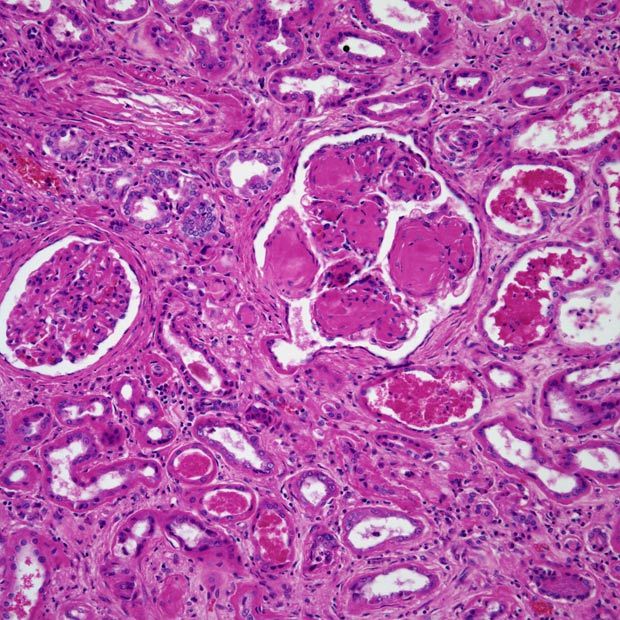Durcabtagene Autoleucel Yields Responses in Relapsed/Refractory Myeloma
Treatment with durcabtagene autoleucel meets the primary end point of a phase 2 study in relapsed/refractory multiple myeloma.
“While [the study] is not designed to compare between the 2 groups, there is the impression that there was a higher grade of AEs present in the 10 x 106 vs the 5 x 106 cohorts, [with] most deaths occurring subsequent to 30 days from infection and progressive disease,” according to study author Andrew Spencer, MD.

Responses and manageable toxicity were reported when administering the anti–BCMA CAR T-cell therapy durcabtagene autoleucel (PHE885) to patients with relapsed/refractory multiple myeloma, according to interim data from a phase 2 study presented at the 21st Annual International Myeloma Society Meeting and Exposition.
In 94 patients who received 10 x 106 CAR T cells, the overall response rate (ORR) was 89% as assessed by independent review committee (IRC), including 61% of patients with a stringent complete response (sCR)/CR, 20% with a very good partial response (VGPR), and 9% with a partial response (PR). These results met the primary end point of the study. Additionally, 10% of patients were classified as having an unknown response.
“These were patients who died prior to the initial evaluation time point or had discord in imaging techniques before and after infusion, therefore confounding interpretation of the results,” said Andrew Spencer, MD, professor at Alfred Hospital-Monash University, Melbourne, Australia, and study presenter.
Patients included in the study were heavily pretreated, with 82.8% (n = 120) triple-class refractory and 30.3% (n = 44) penta-class refractory. Further, 21.4% (n = 31) had high-risk cytogenetic abnormalities, and 53.8% (n = 78) were treated with bridging chemotherapy.
A second dose level of 5 x 106 was also evaluated, and the ORR by investigator assessment in 34 patients was 100%, composed of a 62% sCR/CR rate, a 21% VGPR rate, and an 18% PR rate. The responses observed were durable, and the median duration of response was not reached in patients who achieved a CR at either dose.
A key secondary end point was minimal residual disease (MRD) negativity among the IRC efficacy-evaluable population. At the 10 x 106 CAR T-cell dose, this was 39% (n = 37; 95% CI, 29%-50%), meeting this end point and rejecting the null hypothesis of MRD negativity ≤ 21%.
Regarding safety, there were 4 deaths reported within 30 days of infusion, all at the 10 x 106 dose and adverse event (AE) related. Seventeen deaths occurred more than 30 days post infusion, with 4 at the 5 x 106 dose and 13 at the 10 x 106 dose. Here, 7 deaths were due to disease progression and 10 due to AEs.
In the lower-dose cohort, 100% (n = 34) of patients experienced cytokine release syndrome (CRS), with 8.8% (n = 3) experiencing grade 3 or higher and none experiencing grade 5. In the higher-dose cohort, 96.4% (n = 107) of patients experienced CRS, 5.4%(n = 6) were grade 3 or higher, and 1.8% (n = 2) were grade 5. Across all patients, the median time to CRS onset was 8 days with a median time to resolution of 4 days.
Immune effector cell associated neurotoxicity syndrome (ICANS) was observed in 5.9% (n = 2) of the lower-dose cohort and 16.2% (n = 18) of the higher-dose cohort, with grade 3 or higher events in 0% and 6.3% (n = 7) of patients, respectively. The median time to ICANS onset across all patients was 9 days with a median time to resolution of 5 days.
“While [the study] is not designed to compare between the 2 groups, there is the impression that there was a higher grade of AEs present in the 10 x 106 vs the 5 x 106 cohorts, [with] most deaths occurring subsequent to 30 days from infection and progressive disease,” Spencer concluded.
Reference
Spencer A, Raab M, Iida S, et al. Interim phase 2 study results of durcabtagene autoleucel (PHE885), a T-Charge™ manufactured BCMA-directed CAR-T cell therapy in patients with r/r multiple myeloma. Presented at: 2024 International Myeloma Society Annual Meeting; September 25-28, 2024; Rio de Janeiro, Brazil. Abstract OA-12.